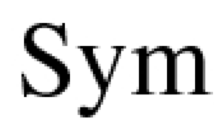Abstract
Given a connection ω in aG-bundle overS 2, then a process called radial trivialization from the poles gives a unique clutching function, i.e., an element γ of the loop group ΩG. Up to gauge equivalence, ω is completely determined by γ and a map f:S2 →g into the Lie algebra. Moreover, the Yang-Mills function of ω is the sum of the energy of γ and the square of a certain norm off. In particular, the Yang-Mills functional has the same Morse theory as the energy functional on ΩG. There is a similar description of connections in aG-bundle over an arbitrary Riemann surface, but so far not of the Yang-Mills functional.
Similar content being viewed by others
References
Atiyah, M.F., Bott, R.: The Yang-Mills equations over Riemann surfaces. Phil Trans. R. Soc. Lond. A308, 523–615 (1982)
Friedrich, Th., Habermann, L.: Yang-Mills equations on the two-dimensional sphere. Commun. Math. Phys.100, 231–243 (1985)
Nahm, W., Uhlenbeck, K.: The equivalence of quantized gauge fields onS 2 and the quantum mechanics of a particle moving on the group manifold. Preprint
Pressley, A., Segal, G.: Loop groups. Oxford: Clarendon Press 1986
Seeley, R.T.: Extensions ofC ∞-functions defined in a half space. Proc. Am. Math. Soc.15, 625–626 (1964)
Author information
Authors and Affiliations
Additional information
Communicated by L. Alvarez-Gaumé
Rights and permissions
About this article
Cite this article
Gravesen, J. Loop groups and Yang-Mills theory in dimension two. Commun.Math. Phys. 127, 597–605 (1990). https://doi.org/10.1007/BF02104504
Received:
Issue Date:
DOI: https://doi.org/10.1007/BF02104504



